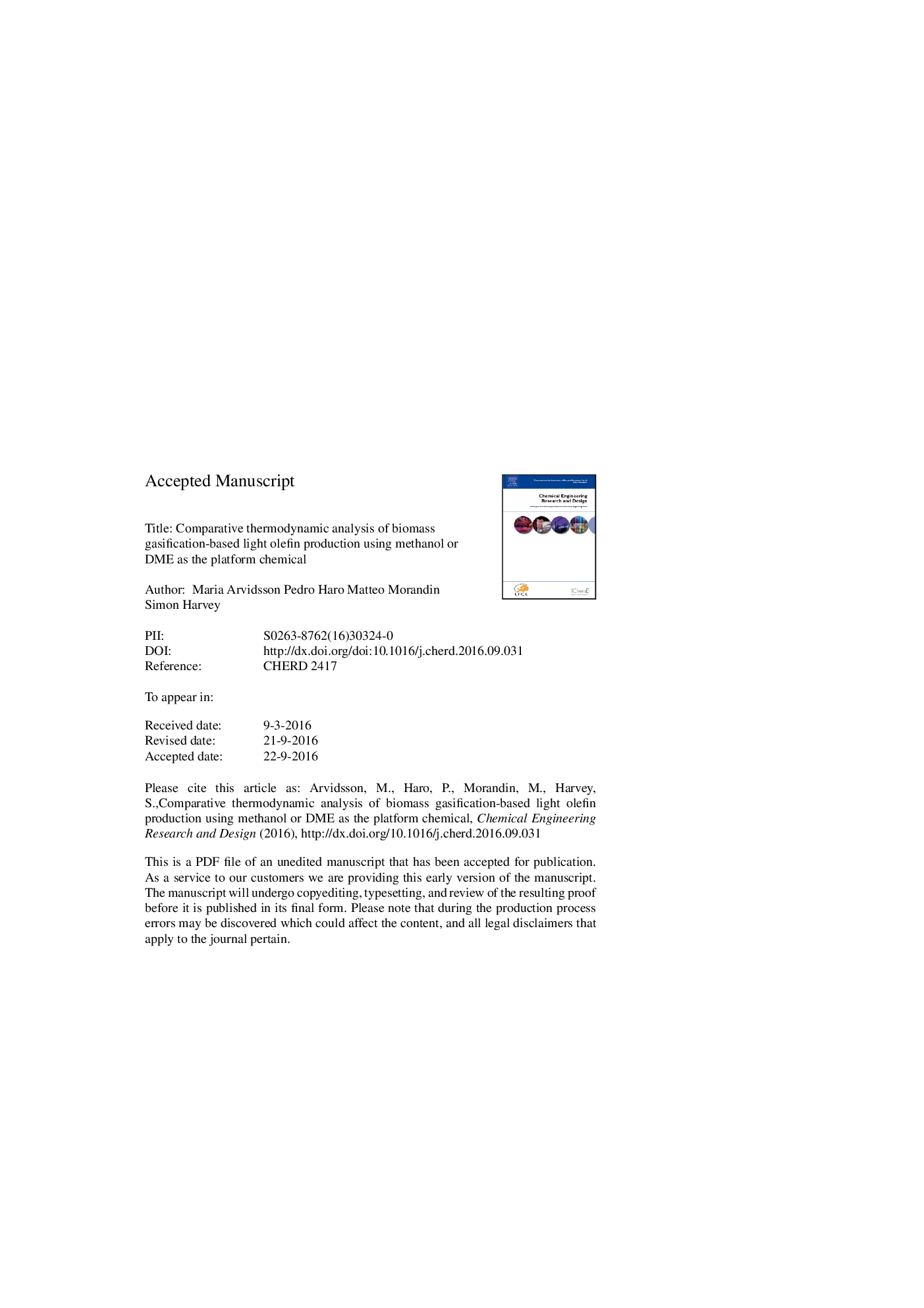| کد مقاله | کد نشریه | سال انتشار | مقاله انگلیسی | نسخه تمام متن |
|---|---|---|---|---|
| 4987454 | 1368028 | 2016 | 44 صفحه PDF | دانلود رایگان |
عنوان انگلیسی مقاله ISI
Comparative thermodynamic analysis of biomass gasification-based light olefin production using methanol or DME as the platform chemical
دانلود مقاله + سفارش ترجمه
دانلود مقاله ISI انگلیسی
رایگان برای ایرانیان
کلمات کلیدی
DTOMethanol-to-propyleneHHVMTPFCCASUHVCDTGWGSMTGMTOGHGDMELHVlower heating value - ارزش حرارت پایین ترLight olefins - الفین های سبکPlatform chemical - بستر شیمیاییFluid catalytic cracking - ترک خوردگی کاتالیزور مایعWater Gas Shift - جابجایی گازFTO - دعوتDimethyl ether - دیمتیل اترBiorefinery - زیست پالایشFischer Tropsch - فیشر تروپسMethanol - متانولMethanol-to-olefins - متانول به الفینMethanol-to-Gasoline - متانول به بنزینair separation unit - واحد جداسازی هواGreenhouse gas - گاز گلخانه ایGasification - گازسیونHigher heating value - گرمای بالاتر
موضوعات مرتبط
مهندسی و علوم پایه
مهندسی شیمی
تصفیه و جداسازی
پیش نمایش صفحه اول مقاله

چکیده انگلیسی
This work investigates and compares the thermodynamic performance of alternative platform chemicals for the production of light olefins (i.e., ethylene, propylene, and mixed butylenes) via gasification of lignocellulosic biomass (forest residues). Two concepts based on the same general process layout are considered: (i) via methanol synthesis and methanol-to-olefins (MTO) synthesis; (ii) via direct dimethyl ether (DME) synthesis and DME-to-olefins (DTO) synthesis. The work is based on process models established in Aspen Plus to obtain mass and energy balances. Heat recovery targets for integration of a steam network for combined heat and power production are investigated using pinch analysis tools. The different process alternatives are compared in terms of energy efficiency (ηen). Additionally, to identify key process differences, the cold gas efficiency (ηcg,i) and carbon conversion (Cconv,i) from biomass feedstock to various intermediate products along the process value chain are compared. The results show that light olefins could be produced with an energy efficiency of approximately 52-54% (higher heating value (HHV) basis) using methanol and DME as platform chemicals. The two investigated concepts had similar cold gas efficiency along the process value chain and overall electricity balance. Accordingly, no significant thermodynamic difference could be identified for the two investigated cases. One interesting feature that is identified is that the same amount of the renewable carbon in the feedstock is lost, mainly as CO2, regardless of whether the methanol or DME route is adopted. The difference is where in the process value chain most of the CO2 is formed and removed.
ناشر
Database: Elsevier - ScienceDirect (ساینس دایرکت)
Journal: Chemical Engineering Research and Design - Volume 115, Part A, November 2016, Pages 182-194
Journal: Chemical Engineering Research and Design - Volume 115, Part A, November 2016, Pages 182-194
نویسندگان
Maria Arvidsson, Pedro Haro, Matteo Morandin, Simon Harvey,